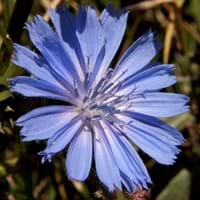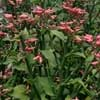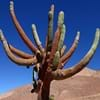Life Span
Perennial
Perennial
Type
Shrub
Flowering Plants, Shrubs, Vegetable
Origin
Madagascar
Mediterranean
Types
Euphorbia tithymaloides tithymaloides, Euphorbia tithymaloides angustifolia
Belgian Endive, Red Belgian Endive, Curly Endive (a.k.a. Frisee), Escarole, Radicchio (Chioggia) and Radicchio (Chioggia)
Habitat
subtropical regions, Tropical regions
Grassland, Mediterranean region, Wild
USDA Hardiness Zone
9-13
3-9
AHS Heat Zone
Not Available
9-1
Sunset Zone
H2, 13, 23, 24
A1, A2, A3, H1, H2, 1a, 1b, 2a, 2b, 3a, 3b, 4, 5, 6, 7, 8, 9, 10, 11, 12, 13, 14, 15, 16, 17, 18, 19, 20, 21, 22, 23, 24
Habit
Upright/Erect
Clump-Forming
Flower Color
Purple, Orange, Pink, Magenta
Blue
Flower Color Modifier
Not Available
Not Applicable
Fruit Color
Not Available
Brown
Leaf Color in Spring
Green, Gray Green, Burgundy
Green
Leaf Color in Summer
Green, Gray Green
Green
Leaf Color in Fall
Green, Gray Green
Green
Leaf Color in Winter
Green, Gray Green
Green
Plant Season
Spring, Summer, Fall, Winter
Summer
Sunlight
Full Sun, Partial Sun
Full Sun, Part sun
Type of Soil
Loam, Sand
Loamy, Sandy
The pH of Soil
Neutral, Alkaline
Acidic, Alkaline, Neutral
Soil Drainage
Well drained
Well drained
Bloom Time
Late Spring, Early Summer, Summer, Indeterminate
Summer
Tolerances
Drought
Not Available
Where to Plant?
Container, Ground, Pot
Ground
How to Plant?
Seedlings, Softwood cuttings
Seedlings
Plant Maintenance
Medium
Medium
Watering Requirements
Average Water Needs, Do Not over Water
Keep the ground moist but not water-logged, Prefer drip-irrigation instead of Over-head watering, Requires regular watering, Requires watering in the growing season
In Summer
Lots of watering
Lots of watering
In Spring
Moderate
Moderate
In Winter
Average Water
Average Water
Soil pH
Neutral, Alkaline
Acidic, Alkaline, Neutral
Soil Type
Loam, Sand
Loamy, Sandy
Soil Drainage Capacity
Well drained
Well drained
Sun Exposure
Full Sun, Partial Sun
Full Sun, Part sun
Pruning
Remove damaged leaves, Remove dead branches, Remove dead leaves
Cut or pinch the stems, Prune prior to new growth, Prune to stimulate growth, Remove dead or diseased plant parts, Remove deadheads
Fertilizers
All-Purpose Liquid Fertilizer
All-Purpose Liquid Fertilizer
Pests and Diseases
Red blotch
Aphids, Loopers, Root rot, Viruses, Worms
Plant Tolerance
Drought
Drought
Flower Petal Number
Single
Not Available
Foliage Texture
Bold
Medium
Foliage Sheen
Matte
Matte
Invasive
Sometimes
Sometimes
Attracts
Hummingbirds
Butterflies
Allergy
Carcinogenic, Diarrhea, Skin irritation, Toxic
Not Available
Aesthetic Uses
Cottage Garden, Showy Purposes
Not Used For Aesthetic Purpose
Beauty Benefits
Skin Problems
Not Available
Environmental Uses
Air purification
Air purification
Medicinal Uses
Asthma, Emetic, Inflammation, Intestinal worms
Cancer, Digestive disorders, Inflammation, Liver problems, Stomach pain
Part of Plant Used
Leaves, Root
Leaves, Root
Other Uses
Tea-like beverage can be brewed, Used as Ornamental plant, Used for its medicinal properties
Used as an ingredient in coffee
Used As Indoor Plant
No
No
Used As Outdoor Plant
Yes
Yes
Garden Design
Container, Houseplant, Mixed Border, Rock Garden, Wall, Tropical
Not Available
Botanical Name
Euphorbia tithymaloides
Cichorium intybus
Common Name
Devil's Backbone
Blue daisy, blue dandelion, blue sailors, blue weed, bunk, coffeeweed, cornflower, hendibeh, horseweed, ragged sailors, succory, wild bachelor's buttons, and wild endive
In Hindi
Devil's Backbone
कासनी
In German
Devil's Backbone
Chicoree
In French
Backbone du Diable
chicorée
In Spanish
El espinazo del diablo
achicoria
In Greek
Devil's Backbone
ραδίκι
In Portuguese
Espinha do Diabo
chicória
In Polish
Kręgosłup diabła
cykoria
In Latin
Narum diaboli
pancratium
Phylum
Magnoliophyta
Magnoliophyta
Class
Magnoliopsida
Magnoliopsida
Order
Malpighiales
Asterales
Family
Crassulaceae
Asteraceae
Genus
Euphorbia
Cichorium
Clade
Angiosperms, Eudicots, Rosids
Angiosperms, Asterids, Eudicots
Tribe
Euphorbieae
Cichorieae
Subfamily
Euphorbioideae
Cichorioideae
Number of Species
Not Available
Importance of Devils Backbone and Chicory
Want to have the most appropriate plant for your garden? You might want to know the importance of Devils Backbone and Chicory. Basically, these two plants vary in many aspects. Compare Devils Backbone and Chicory as they differ in many characteristics such as their life, care, benefits, facts, etc. Every gardener must at least have the slightest clue about the plants he wants to plant in his garden. Compare their benefits, which differ in many ways like facts and uses. The medicinal use of Devils Backbone is Asthma, Emetic, Inflammation and Intestinal worms whereas of Chicory is Cancer, Digestive disorders, Inflammation, Liver problems and Stomach pain. Devils Backbone has beauty benefits as follows: Skin Problems while Chicory has beauty benefits as follows: Skin Problems.
Compare Facts of Devils Backbone vs Chicory
How to choose the best garden plant for your garden depending upon its facts? Here garden plant comparison will help you to solve this query. Compare the facts of Devils Backbone vs Chicory and know which one to choose. As garden plants have benefits and other uses, allergy is also a major drawback of plants for some people. Allergic reactions of Devils Backbone are Carcinogenic, Diarrhea, Skin irritation and Toxic whereas of Chicory have Not Available respectively. Having a fruit bearing plant in your garden can be a plus point of your garden. Devils Backbone has no showy fruits and Chicory has no showy fruits. Also Devils Backbone is not flowering and Chicory is flowering. You can compare Devils Backbone and Chicory facts and facts of other plants too.





